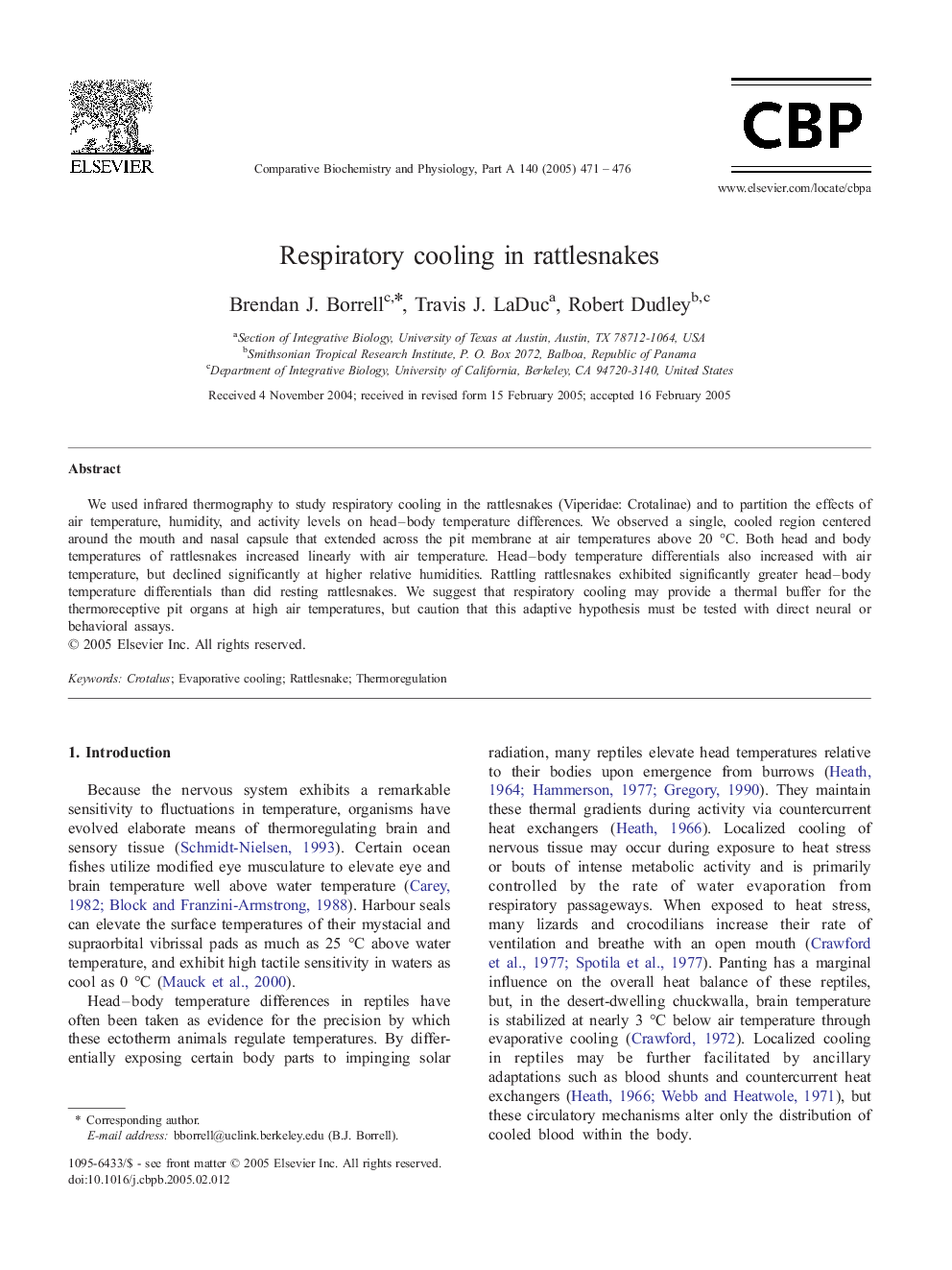| Article ID | Journal | Published Year | Pages | File Type |
|---|---|---|---|---|
| 9889587 | Comparative Biochemistry and Physiology Part A: Molecular & Integrative Physiology | 2005 | 6 Pages |
Abstract
We used infrared thermography to study respiratory cooling in the rattlesnakes (Viperidae: Crotalinae) and to partition the effects of air temperature, humidity, and activity levels on head-body temperature differences. We observed a single, cooled region centered around the mouth and nasal capsule that extended across the pit membrane at air temperatures above 20 °C. Both head and body temperatures of rattlesnakes increased linearly with air temperature. Head-body temperature differentials also increased with air temperature, but declined significantly at higher relative humidities. Rattling rattlesnakes exhibited significantly greater head-body temperature differentials than did resting rattlesnakes. We suggest that respiratory cooling may provide a thermal buffer for the thermoreceptive pit organs at high air temperatures, but caution that this adaptive hypothesis must be tested with direct neural or behavioral assays.
Related Topics
Life Sciences
Biochemistry, Genetics and Molecular Biology
Biochemistry
Authors
Brendan J. Borrell, Travis J. LaDuc, Robert Dudley,
